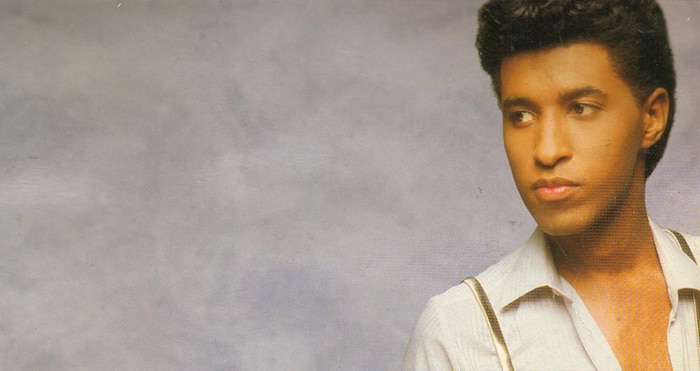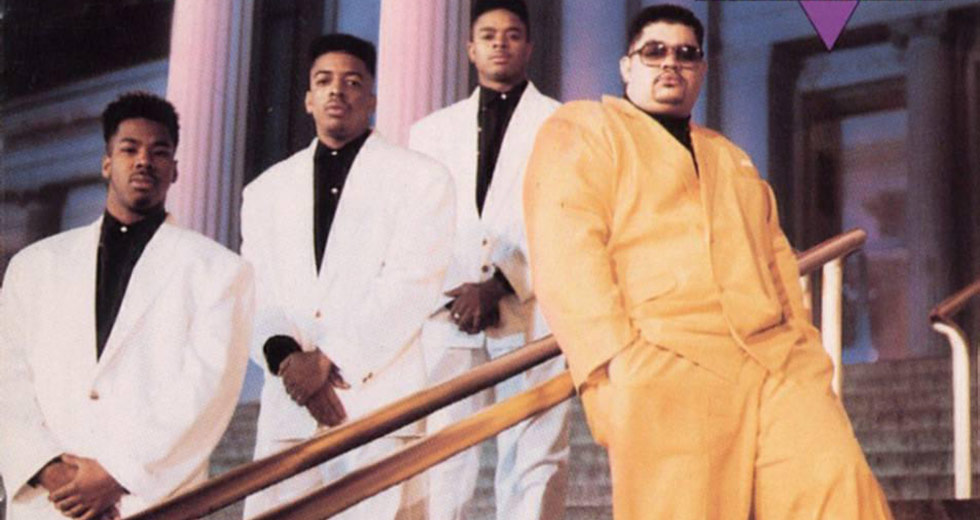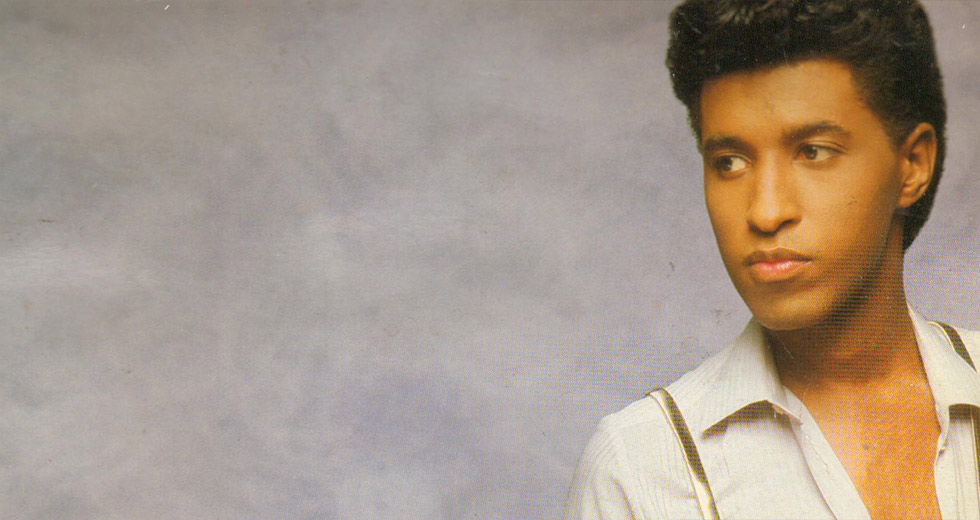Key Tracks: Daryl Simmons on Babyface’s “Tender Lover”
Inside the definitive solo album of one of R&B’s biggest hitmakers.

By the end of the 1980s, Kenneth “Babyface” Edmonds solidified his place among R&B music’s elite. In the early part of the decade, Edmonds joined forces with Antonio “L.A.” Reid, the drummer of then-popular R&B group, The Deele, and his childhood friend, songwriter and musician Daryl Simmons, to form a production trio. While taking a break from recording with his group The Deele, Edmonds released his debut album, Lovers, in 1986. Meanwhile, the trio continued to collaborate on songs. A year later, they received their big break when one of their songs was chosen by the legendary R&B quintet, The Whispers for their 1987 album, Just Gets Better with Time.
As a result, the next two years were full of musical activity, and it culminated in Edmonds follow-up record. On July 30, 1989, Tender Lover was released by SOLAR Records, and it became an overwhelming success. The record would spawn four singles, including two number-one hits “It’s No Crime” and “Tender Lover.” Another single, “Whip Appeal,” landed in the #2 position on the Billboard R&B Music Charts. The last single, “My Kinda Girl” ended up hitting #3. Late last year, RBMA spoke with Simmons about the definitive album in Edmonds’ formidable catalog.
When and where did you first meet Kenneth “Babyface” Edmonds and Antonio “L.A.” Reid?
I met Kenny [Edmonds] when I was 14, and he was 13. We met in Indianapolis. I actually played in a band with his brother, not one of his brothers that were in the group After 7, but another one. Kenny and I just hit it off. We started writing little songs together and forming bands. The first band we were in together was called Gemini Eight. From Gemini Eight, we formed another band called Tarnished Silver. From Tarnished Silver, we went to Manchild. We ended up being in three or four bands together. Manchild was the ultimate band for us, because we started working in clubs, and we recorded a couple of albums.
From Cincinnati, which was one hundred miles away, Midnight Star would come to play in Indianapolis. So, we became really good friends with Midnight Star. Kenny left Manchild to go write songs with Midnight Star and once he got to Cincinnati, Midnight Star was producing this group called The Deele, which included L.A. Reid. They ended up asking Kenny to join The Deele. When Kenny joined The Deele, he called me and said, “Would you like to come along and write songs and play on the road?” I responded, “Yeah. I would.” So, that’s how I got there and met L.A.
From Tarnished Silver to Manchild and, ultimately, to The Deele, how would you describe the improvement in your songwriting techniques during that span of time in your young careers and how smooth was the transition of involving L.A. Reid after you and Babyface spent years writing songs together?
It went really well. L.A. was the drummer for The Deele, so he brought the rhythm and that was really amazing. Kenny and I didn’t come from that funk style of music. We were from the suburbs; we were the typical suburb kids. We came from sweet melodies and luscious lyrics. L.A. brought a little bit of stank and a great ear to what Kenny and I had. L.A. was also a great producer and still is. He could tell us which songs were going to be a hit, and he was great at sequencing songs. Back then, we didn’t have computers. L.A. would have a ton of legal pads with different orders of the songs and how they should go. We would sit there all night and listen to the songs and how they flowed. He had a great, great ear. He added so much to what Kenny and I were doing. I thought what we did was magical; it was special.
Can you talk about how difficult it was for you, Babyface, and L.A. Reid in the beginning to get people to actually buy in to what you guys were trying to create musically?
L.A. and Kenny handled most of the business for us. L.A. did a lot of it early on with meetings with people. It all started with SOLAR, and we were trying to get our stuff to groups who were on the label such as Lakeside, Dynasty, and Shalamar. We were trying to pen songs for them, but people were rejecting them. It was just a tough time for us. We all lived in an apartment in Los Angeles, and we were barely holding on. We kept wondering if this thing was going to happen. [laughs] We would fill up on red beans & rice, because Golden Bird Chicken was across the street from SOLAR Records. We didn’t own cars back then; we would walk everywhere.
L.A. and I were in the kitchen at our apartment and we were eating tuna out of a can, and we wrote the song “Secret Rendezvous.”
I remember walking around SOLAR with a briefcase in my hand trying to make something happen. Just to see if I could meet with Dick Griffey. We paid our dues, but we stayed at it. It made us work hard. It took us about three years to get a song placement. It ended up being on The Whispers’ Just Gets Better with Time album. This was the beginning of everything. During the three years we were in L.A. trying to survive, we would go on the road and do some [The] Deele dates and come back and start cranking out songs. It was a real struggle. At the same time, we told each other, “What are we going to go back home for? There is nothing there. Let’s just try to stay and hammer it out.” Kenny and I weren’t going to go back to Indianapolis. Our thing was we would tell our families we were living out here in Hollywood and everybody will think we’re doing great. Little did they know, we were out there starving and poor. Back then, to go back home it cost $1300 or $1400 per ticket. I can remember one Christmas L.A. and I were in the kitchen at our apartment and we were eating tuna out of a can, and we wrote the song “Secret Rendezvous.” We couldn’t afford to go home. We had our struggles, but it made us who we were.
How long did it take for you, Babyface, and L.A. Reid to find your trademark sound while making Tender Lover?
It didn’t take us long at all. I don’t even know if we ever disagreed, because it was like we could finish each other’s sentences. We knew what the other was thinking. It was just a matter of getting someone to hear what we were doing and to believe in it. We knew our music was good. It was just a matter of time before somebody gave us a chance to do it. Once they did, it was a snowball effect. I actually remember the day our lives changed. I went back to Cincinnati with the band, because I wasn’t producing I was just writing. L.A. and Kenny were working as producers, and they had produced The Deele’s albums. I remember Kenny gave me a call and said, “Hey, you need to back out here to Los Angeles. Shit is starting to happen.” I replied, “Really?” He said, “Yeah. L.A. and I just wrote this song and recorded it with The Whispers. It’s called ‘Rock Steady.’ And they want to do the song you wrote called ‘In the Mood.’” I said, “Really?” He said, “Yeah. Stuff is starting to happen, and you need to get back out here because we’re going to have a lot more work.”
It was a whirlwind back then for us; it was music twenty-four-seven. I think, we had four or five songs in the top ten at the same time.
We were living in an apartment on Highland Avenue out in Los Angeles. I remember L.A. had a big dry erase calendar, and we had all the songs written on there. He used to say, “Hey, wake up! We have this guy named James Ingram coming by. This lady named Sheena Easton is coming by. We got this kid named Johnny Gill coming by and this girl named Karyn White is coming by. There is this cheerleader for The Lakers named Paula Abdul coming by.” So, this was like every day. Somebody was coming by to listen to our songs. We had all these songs on a dry erase board, and L.A. would be the conductor of everything. He determined what songs we were going to play for certain artists. These people would come in the room, and I would stand against the wall and we would play the songs or Kenny would sing them or we all would sing the hook. The artists would say, “Yeah. I love that one. I want to record that.”
It was a whirlwind back then for us; it was music twenty-four-seven. I think, we had four or five songs in the top ten at the same time. I remember back then people used to ask us, “How are you guys doing so much music?” It was like an assembly line; it was that crazy. Our machine was non-stop.
I was with L.A. not too long ago at his house. He said, “I have to go check in on Mariah [Carey]. She’s up here recording with B. Cox. Take a ride with me.” So, we go over to this house and we walked into the studio, and there were a ton of people in there. L.A. said, “Whoa! Who are all of these people?” Mariah responded, “This is the producer. This is the writer. This is the guy who made the beat. This person did the melody. This person is producing the vocals.” L.A. replied, “Whoa! It takes all of these people to make a record?” [laughs] We got back into the car and I told him, “Do you realize all of the work that you, Kenny, and I did? Nowadays it takes five or six people or sometimes even more to make a record.” He said, “Man, it’s crazy.”
At this time, the three of you were producing so many records. What was your approach in carving out the time to complete this record?
It was Kenny’s solo album, so he produced the bulk of it, as you can tell. He would just stay at his house and write songs. He would tell me he came up with a song called “Sunshine” or “Whip Appeal.” He said, “My parents told me when I was dating this girl, she had me whipped. So I came up with this idea called whip appeal. She had that whip appeal.” This album was all Kenny-driven. I think L.A. came up with the beat for “My Kinda Girl” because it had that sort of Bobby Brown vibe to it and “It’s No Crime.” Those songs were L.A.-driven as far as the beat and then Kenny put some stuff on top of it. This album was Kenny’s defining moment. Every artist has a defining album and everything before that leads up to that and everything after it is just an extension. It was Kenny’s defining album; it’s what people know him for. They know him for “Sunshine,” “Whip Appeal,” and “Soon as I Get Home.” He was in a zone, and we were in a zone.
What was your studio routine for this album?
Well, we would cut the tracks. L.A. would work on the music for a long time making sure the foundation was strong. Kenny would go in and lay down the backgrounds. If we felt like we needed to add something to it like percussion or another background, we would do it. Like I said before, it was his album, which made it easy, because we could do what we wanted. We didn’t have to figure out too much. He knew what he wanted to say, and we just put our finishing touches on the songs.
We put in long days at the studio. We would leave L.A. there and it would be four in the morning. Sometimes, we would go back and L.A. hadn’t been to bed. This happened more times than not. L.A. was notorious for sitting there and mixing songs and make sure the songs were sonically right. He would not go to bed. You have to remember there were no computers at that time. We used to have to replay that stuff. If we messed it up, we would have to play it again. There wasn’t any Auto-Tune or Pro Tools to fix it. We fixed it ourselves.
What were some of the instruments you used in crafting the music?
Kenny and I would always start out on the piano. It was the base for about 90 to 95 percent of everything we created. Every now and then he would grab the guitar, but usually he would add the guitar sounds later. He would sit at the piano and come up with the melody and chords. It’s always been our way.
How long did it take to record the songs?
It didn’t take long at all. Kenny was very quick; he sings too well. Once we got a good feeling, we do a take and then we would stop and talk about our approach to the next section of the song or move on to do another song. We wrote the songs, so we knew how they were supposed to feel and what the emotions should be.
What role did the engineer(s) play in making the sound crystal clear for the songs on this album?
We had a guy named Jim Zumpano who recorded everything, but the mixing engineer was a guy named Jon Gass, and we had another guy named Barney Perkins. Barney Perkins had mixed Anita Baker’s Rapture album. So, he was notorious for getting vocals really, really clear and up front. Jon did a lot of the ballads, but we turned to Barney because he had an R&B ear. Between Barney Perkins and Jon Gass, they did all the mixing. Jon knew us very well. He knew our instrumentation; he knew the pianos needed to glisten and have tingle to them. Jon knew our sound very well, and he would make it sound great. It’s one of the things I’m proud of when I hear the records from this album. The music still sounds really great to me. I’m not ashamed of anything we did.

